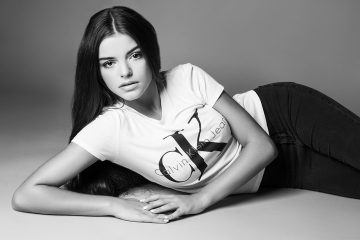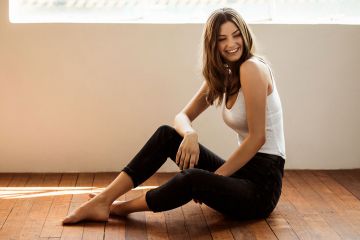The Novice's Guide to Product Photography
If a image is worth a thousand words, a magnificent product picture deserves a thousand web site sees. Although I don't have data to support that declaration (yet), product photography can be exceptionally beneficial to your ecommerce web site approach.
To reach your target audience participants that favor purchasing online, you also require to give your target market clear, appealing images of your items.
Yet product photography isn't as simple as aiming and shooting. Also the most basic items require the proper devices, illumination, and also space to generate attractive pictures that sell customers right from the purchase page.
6 Product Photography Tips ( and also Examples) for Taking Pictures That Offer
Here are the pointers, examples, and also products you'll require to properly photograph and also market your items in a way that makes your site visitors as well as prospects intend to convert.
1. Don't hesitate to utilize your mobile phone's video camera.
This is the part where I'm expected to encourage you to invest in a premium, 50-megapixel (MP) camera with a 100-millimeter screw-on lens. But I'm not mosting likely to do that.
If you currently have a cam that fits this summary, make use of it. However, for numerous sorts of items, it's entirely acceptable to fire product pictures on a smart device.
Newer mobile phones boast effective electronic camera lenses and setups that permit you to optimize your shots for the various sorts of light and atmospheres you may shoot in.
If you require much more convincing, simply have a look at Apple's Shot On An iPhone project as well as the images that have actually arised from it throughout the years such as this:
2. Fire from a tripod for photo consistency.
Prior to describing tripods, I'm obliged to begin with a cardinal guideline: Do not prop your phone versus something durable to aim your lens towards the topic.
It's just also very easy for this makeshift configuration to glide about throughout the shoot and also trigger variances in your images' appearance. If you rest your cam on, say, a stack of publications, just make sure this arrangement doesn't transform over the course of the shoot.
There's no harm in holding your video camera yourself when shooting simply a couple of product pictures for your ecommerce website. Yet as your service expands, and you take a lot more images of more items, it can be hard to systematize the product's alignment in each photo when firing portable.

To make certain uniformity across your items, you'll need a tripod. As well as the good news is, buying one isn't constantly the large, industrial-sized investment it utilized to be.
Below are 2 types of tripods to take into consideration.
Conventional vs. Adaptable
This is a tradition tripod-- there are typical tripods offered for both cameras as well as mobile phones.
A versatile tripod can be controlled in a number of methods. You can bend its legs and also put it on different surfaces to get the angle you need.

Mobile Hold
There's often a screw on the top of your tripod which connects to your cam to hold it in place. The bottom of the majority of professional-grade cameras has a screw opening just for this function, yet smart devices can use the complying with adapter:
The adapter grips the sides of your mobile phone and also can screw right into either sort of tripod, allowing you to run the video camera manages with the phone screen encountering outward as well as towards you.
As soon as you determine which mount you'll need, establish it up in front of your product, as well as take into consideration placing three items of tape on the ground to mark where you wish to maintain each leg of your tripod over the course of the shoot.
3. Select natural light or man-made light.
Never underestimate how certain types of light can boost (or impede) your product photography. Remember, customers obtain the best take a look at an item personally, where they can see everything they need to before acquiring. The ideal illumination plan assists you disclose those important decision-making product functions when all internet site visitors have to go on is a photo.
A solitary lights configuration may not help every product-- a lights plan that benefits some products may compromise the look of others.
There are 2 types of light you can select as your primary light source: natural as well as man-made light.
Natural Light
Natural light describes sunshine-- simple as that. It's likewise known as "soft light" due to the fact that the sun casts a larger, softer series of light than, state, a lamp radiating straight on the product. Ecommerce product shots thrive in natural light if:
The product is shot outside or indicated to be made use of outside.
The product is utilized by, worn on, or shot with a person ( individuals have a tendency to look far better in natural light).
You're attempting to highlight the product's environments, instead of particular attributes of the product.

Right here's an instance of a shot utilizing natural light:
Artificial Light
Fabricated light consists of candles, fire, as well as a lot more frequently, light bulbs. It's also described as "hard light" because it produces a smaller however more concentrated light surface. This sort of light deals with products with physical information that need to be highlighted to excite an on-line buyer.
As a basic rule, adhere to simply one kind of light per photo-- all-natural or synthetic. Including natural light to an artificially lit photo can soften a product that's implied to festinate, and also including man-made light to a normally lit photo can hone a product that's indicated to look soft. You do not intend to enter your own method.
4. Fill or jump your light to soften darkness.
Whether you utilize natural light or man-made light, you'll require to lessen the shadows that any kind of prospective tough light casts on the opposite end of a product.
There are 3 ways to do this:
Fill Light
Include an additional, less-intense light source to supplement your main light. This extra light is called your fill light and also is made use of as a counterbalance to soften the natural shadow your major light produces behind an object.
To do this, put your fill light contrary your main light so your product rests in between both source of lights.
Flashbulb Bounce Card
A bounce card, or reflector card, is a tiny card that "reflects" or " jumps" the primary light back onto the surface below your product to decrease darkness.
Some bounce cards attach to the flashbulb of a professional video camera lens to diffuse the light from the camera's flash. This card splashes a softer light onto the subject from above your collection-- as opposed to right at it-- so you do not have lengthy shadows trail behind the object you're firing.
Standalone Bounce Card
If you're shooting from a mobile phone, a flashbulb bounce card isn't an choice, because you do not have a physical flash you can affix it to. Instead, make advertising campaign photography your very own standalone bounce card placed opposite your primary source of light.
For beginners to product photography, this bounce card can efficiently change your fill light, which counters the tough light from the electronic camera flash or light that's dealing with towards the front of your product.
5. Utilize a move or portrait setting to stress the product.
There isn't one appropriate means to place your product, lights, and bounce cards-- they can transform substantially depending upon your background. However don't pick a history based upon what's easiest to develop. Histories need to appear like just how you desire your buyers to perceive your product when viewing it online.
Take into consideration initially whether you 'd such as a white history or a more vibrant, real-world background. There's an very easy method to attain every one.
White Background: Sweep
For white histories, it's not as easy as establishing a table against white drywall. Also smartphone cams can pick up little imperfections on a white wall surface that you wouldn't see with the naked eye. To capture a perfect white history with no edges or acnes, make use of a sweep.
A sweep is a big bendable sheet of paper, whose lower work as the surface area underneath your product and then curves up into a white wall behind the product.
On video camera, the sweep's curve is undetectable, emphasizing essential product details and enabling the thing to possess all of a web site site visitor's attention.
Real-World Background: Portrait Setting
Dynamic, real-world backgrounds are very attractive when capturing products that have a particular usage or are being modeled by a person-- as you saw aware of the briefcase previously in this guide.
However, it's very easy for a real-world history to take the emphasis of the photo, making it vague which product in the photo you're really marketing.
Provide your product depth and emphasis with portrait mode, a image setup on the majority of professional cams, and also available on several brand-new smartphones. This setup obscures the history so the context of the product is clear but not competing against the product itself.
Below is a extremely remarkable photo of a HubSpot pen taken in picture setting on a Google Pixel 2 (I took this picture myself). You can tell the pen rests on a workdesk with a computer behind it, however the pen is still the centerpiece for viewers:
6. Fire a range of images.
My last ecommerce photography idea to you is to not quit at one photo per product. Just as your customers look, hold, make use of, and even try out goods in a store, your internet site needs to shoot a selection of photos to imitate this extremely experience.
If you're shooting clothes, as an example, capture the garment of garments alone-- that is, spread out on a white surface area-- in addition to on a mannequin whose shade contrasts the color of the product.
After that, for extra images, have the apparel modeled on a person, enabling you to take photos of the product from the individual's different presents and angles.
Product Photography Set-Up
Next, allow's summarize what we simply obtained-- right here's a listing of quick product photography set-up ideas that you can refer to as well as share on your group:
• Select a camera-- whether that means using your mobile phone.
• Obtain a tripod that helps your camera of choice.
• Choose all-natural or artificial lighting-- think of which choice is best for your product as well as setting.
• Determine whether you'll load or bounce light.
• Select sweep or portrait setting.
• Take several different photos to use your viewers variety.
Start With Your Product Photography
Don't really feel obligated to buy every tip and also tool at the same time. Use these product photography suggestions gradually to see what makes your shop look one of the most presentable, as well as alter your technique as your photography chops get better.